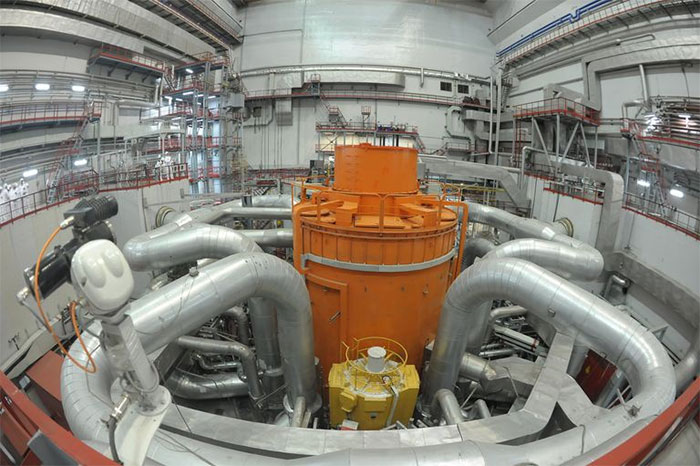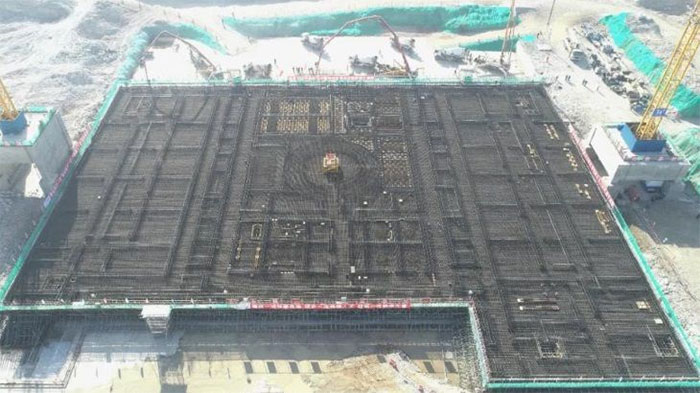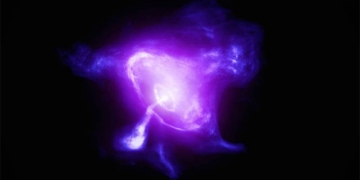Instead of utilizing popular technologies that offer high performance, China has opted to construct nuclear power plants that produce more plutonium than usual.
On a small, remote island in Fujian Province, the China National Nuclear Corporation (CNNC) is building two unusual nuclear reactors, attracting attention and concern from the international scientific community. The plants are expected to be completed and begin generating electricity in 2023 and 2026. They employ a technology known as China’s Fast Reactor 600 (CFR-600).

Location of Changbiao Island, where China is building 2 nuclear power plants. (Photo: Al Jazeera).
According to Al Jazeera, unlike the conventional nuclear power plants around the world, this is a type breeder reactor. During operation, it generates more radioactive material than it consumes. This has raised suspicions among scientists regarding the purpose of this project.
Outdated and Inefficient Technology
The goal of nuclear power plants is to utilize as much fuel as possible, not to generate more atomic waste. This is particularly true for reactors that produce plutonium—a material that can easily be converted into dangerous weapons.
In the history of nuclear power development, plants using breeder reactors have been quickly replaced by more advanced and efficient technologies. Developed countries like the United States, the United Kingdom, and Germany have long since abandoned breeder reactor projects.

Inside a nuclear reactor using Russian breeder reactor technology. (Photo: Getty Images).
However, China sees it differently. The CFR-600 is a sodium-cooled fast neutron reactor. Instead of using water, like most operational nuclear power plants worldwide, it is cooled by liquid sodium, which has a broader temperature range and interacts less than water.
Inside the CFR-600 is a mixed oxide (MOX), made from radioactive plutonium waste and depleted uranium. This is the next step in the development of domestic nuclear technology. China initiated this plan in 2003 with the design of the Experimental Fast Reactor (CEFR).
Notably, instead of developing on a more advanced foundation, such as light water nuclear reactors, which are widely used worldwide with good efficiency, China has chosen a technology that consumes more uranium. For several decades, breeder reactors have been gradually abandoned due to high fuel costs.
Potential for Dual Use?
According to Al Jazeera, experts from the U.S. Nonproliferation Education Center (NPEC) believe that with the amount of plutonium generated by these fast reactors, China could possess 1,270 nuclear warheads by 2030. This number is equivalent to the intercontinental ballistic missiles currently in the U.S. arsenal.

Area in China where nuclear power plants are being built. (Photo: CNNC).
Two former U.S. Assistant Secretaries of State for International Security and Nonproliferation have called for governments to respond decisively to China’s actions.
“In our view, it is time for the leaders of surrounding countries in the Pacific Rim to come together and seriously consider this issue. Is this (China’s nuclear project) really a good idea for an important, dynamic, and prosperous region, or will it continue to entangle us in the production of tons of dangerous materials? Instead, let’s seek better alternatives.”
China’s nuclear development program remains unclear. The U.S., Japan, and South Korea all report their civilian plutonium usage to the International Atomic Energy Agency (IAEA), but China has not made this information public since 2017.
Scientists may continue to question the use of breeder reactors, especially as more countries build nuclear power plants to replace carbon-emitting energy sources.




















































